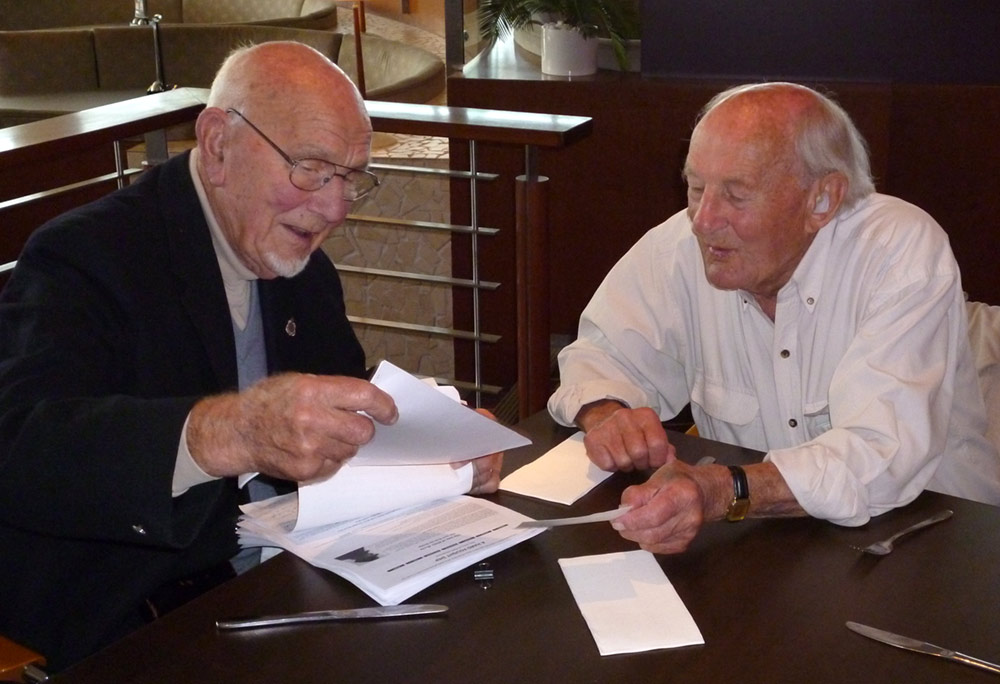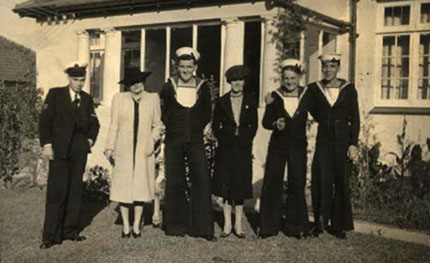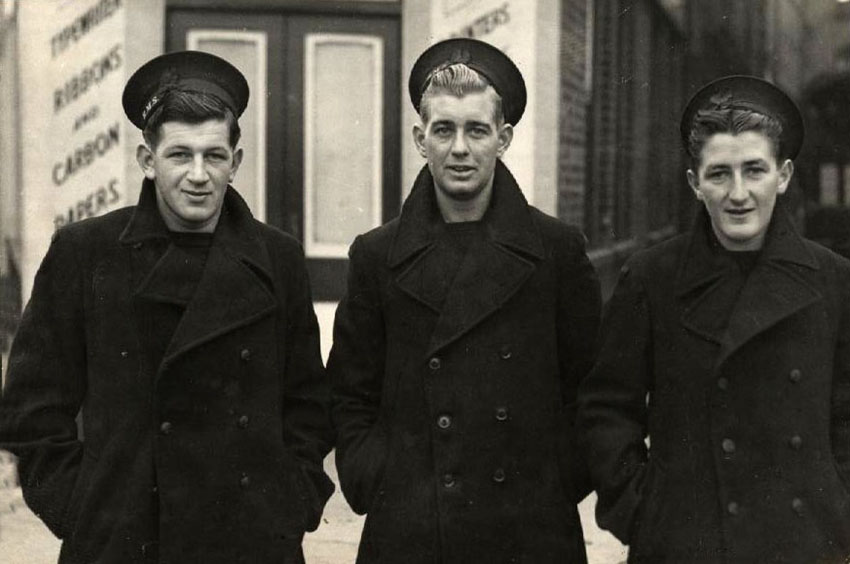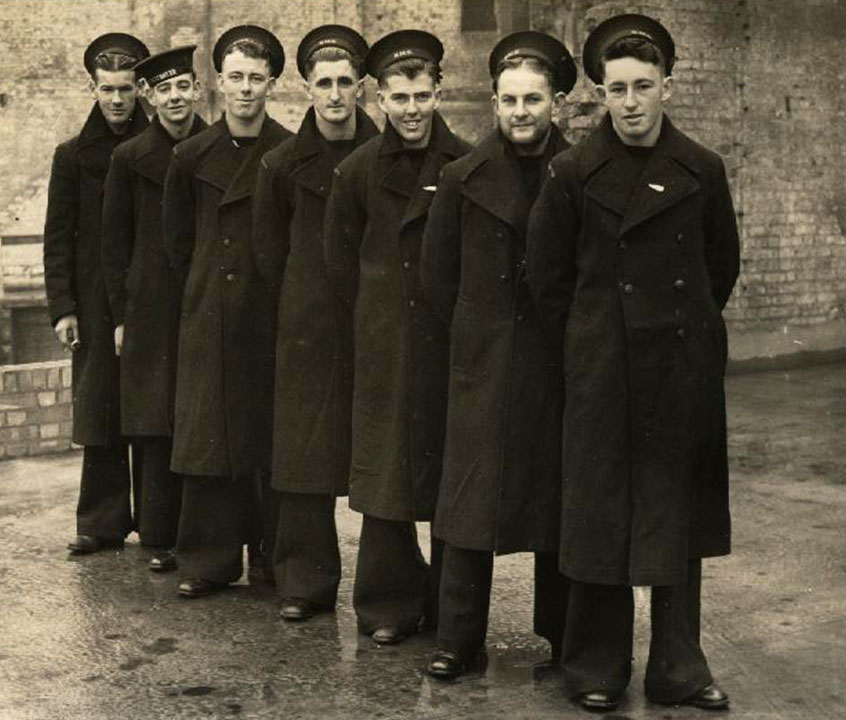After the war Fred returned to the engineering workshop in Palmerston, North Island,
where he did his apprenticeship and remained with them for nearly fifty years: "We
manufactured stainless steel equipment for the dairy, wine, brewery and
freezing works industries, now I try to do the same in my small
workshop only in art form. The Hecla crest in St Alphege in Solihull is one of my efforts."
Fred
Lemberg spent the last ten years of his life with his family in Nelson,
South Island, New Zealand and was 95 when he died there on the 4
February 2015.

Fred Lemberg (on right) and former LSBA (D) Fred "Slinger" Woods who met in Australia in August 2013 to reminisce about HMS Hecla
Courtesy of Jeni Lemberg












